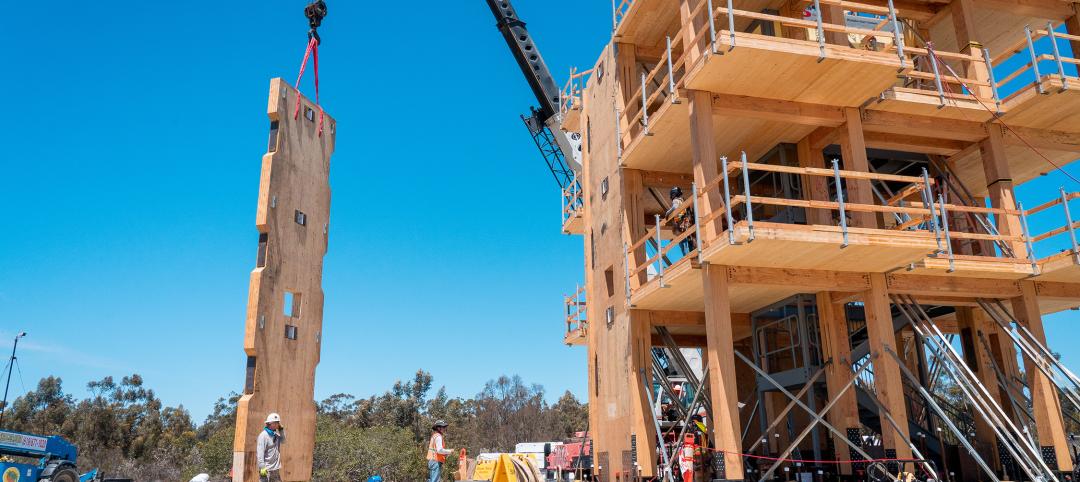Looking back at the past 10 years in mass timber design—since our firm’s first mass timber building, the John W. Olver Design Building at the University of Massachusetts Amherst—it is evident that as a building material mass timber and especially cross laminated timber (CLT) has come a long way. Designed in 2014 and completed in 2017, our 87,500-sf Design Building was one of the first large-scale mass timber buildings in the U.S. It demonstrated the possibilities of mass timber with CLT gravity and lateral systems and a cutting-edge concrete-CLT composite floor system.
Since the landmark UMASS project kicked off a decade ago, more than a thousand mass timber buildings have been planned and hundreds have been realized as built projects. A quick look at WoodWork’s Wood Innovation Network (WIN) proves this point of exponential acceleration. According to WIN, 10 years ago, there were zero building-grade CLT fabrication plants in the U.S. and only a few CLT fabrication plants in North America. Today, there are more than a dozen CLT fabrication plants in North America, and all of Europe’s major CLT producers have a presence in the region.
Simpson Strong-Tie, one of the largest hardware suppliers to the light-frame wood construction market, now has a robust offering of connections hardware for a variety of mass timber products that help lower the cost of mass timber construction.
In 2014, the tallest mass timber building in North America was eight stories. Today, it’s 25 stories.
In 2016, North America’s annual International Mass Timber Conference in Portland, Ore., added “International” to its name and grew from less than 300 attendees that year to over 3,000 last year.
The safety, reliability, and durability of mass timber buildings to replace steel or concrete buildings of scale and size have been proven many times over, especially in large office buildings and housing projects—building typologies with repetitive elements and modules that cater to the efficiencies inherent in the production of large CLT billets, often 8x40 feet and larger.
The distinction of the LWA-designed Adohi Hall Student Housing at the University of Arkansas in Fayetteville of being the largest CLT building in the U.S. at the time of its completion in 2019 has long been surpassed. It became a “proof of concept” for many projects, notably the Walmart headquarters and its entire mass timber campus now under construction in nearby Bentonville.

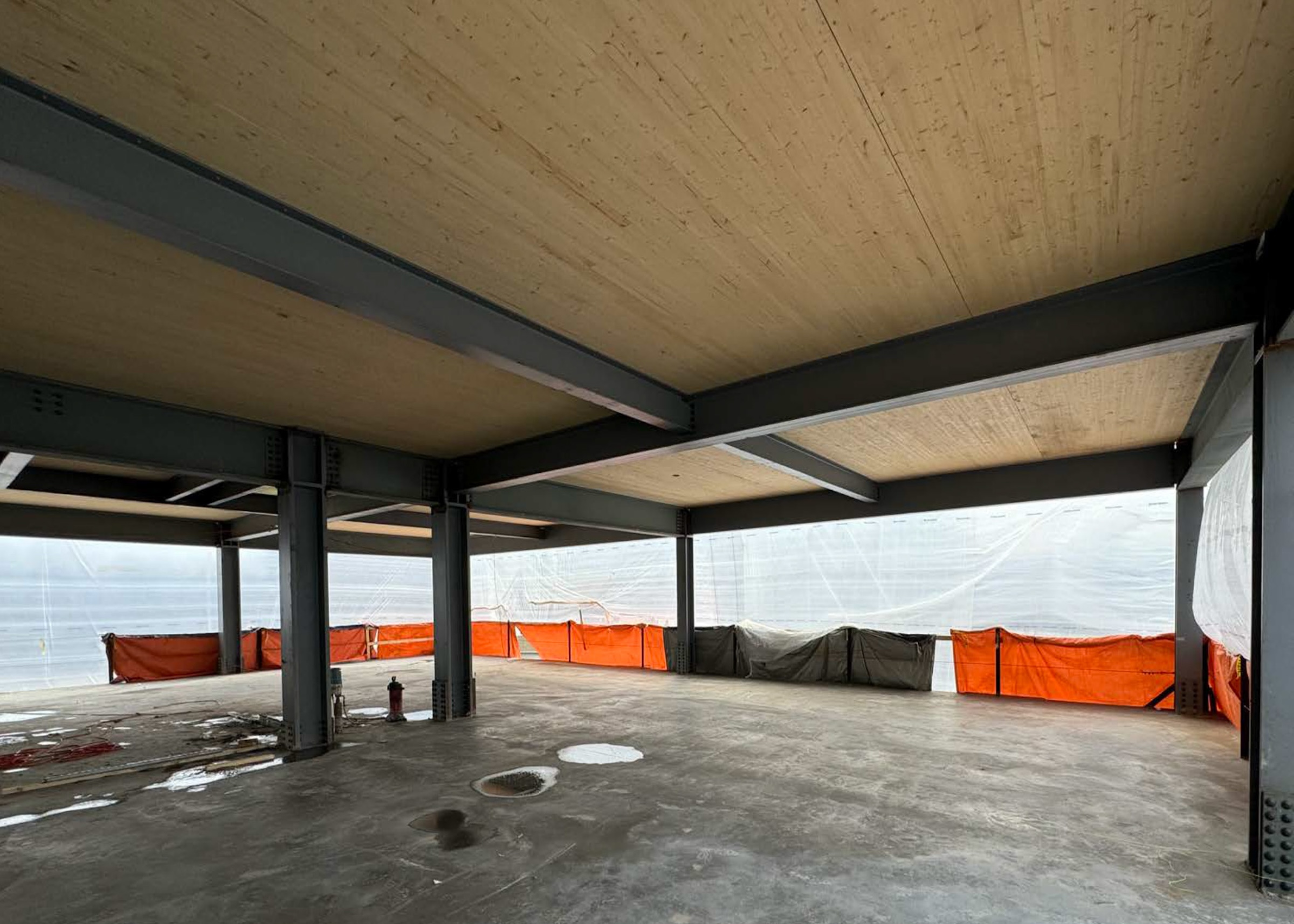
The early decades of use of this innovative material had three common set of details across most projects:
- a mass timber floor panel in conjunction with a post-and-beam structure of glulam columns and beams
- a concrete or other “wet” topping with a thin acoustic mat above the mass timber floor panel for vibration and acoustic control
- a metal hanger for column-to-beam connections.
These three common components—paired with a concrete core or a braced steel lateral structural system—solve a vast majority of architectural and structural conditions necessary for mass timber buildings. As mass timber evolves from this first decade of “common” projects, our firm is finding an increasing variety of mass timber solutions. Here are three primary examples:
1. The rise of mass timber-steel hybrid structures.
Across the U.S., we are seeing more steel frame and CLT floor panel hybrid structural systems. This approach maintains a column grid and beam depth common among many proven building types, especially the 30x30-foot steel office grid.
The CLT floor panel (with a wet topping applied, of course) in lieu of a composite metal deck and concrete floor allows for maximum use of wood fiber, which is important for carbon sequestration. When designed properly, it allows for exposure of the underside of the wood floor panel for aesthetic considerations.
Mass timber-steel hybrid structures have become a preferred solution for projects with set building typologies or cost expectations. Projects such as 901 East Sixth in Austin, Texas, the Engineering West 2 Building at Penn State University in State College, Pa., North Hall Residence at the Rhode Island School of Design in Providence, R.I., and the new CIS building at Cornell University in Ithaca, N.Y., are prime examples showcasing the interchangeability of mass timber and steel.
2. Novel connections reduce the need for steel reinforcement for mass timber buildings.
Innovative approaches to connections detailing that drastically limit or eliminate steel from mass timber buildings are being researched. While still bespoke and quite expensive, solutions to an all-wood structure without steel reinforcements can be seen in projects like the Tamedia Office Building in Zurich, Switzerland, completed in 2013.
But a workforce housing project in Seattle completed in 2023—called Heartwood, designed by atelierjones and detailed with Timberlab—demonstrates the promise of a cost-efficient, all-wood mass application. The team’s design eliminates the steel connector, often an expensive component of a mass timber building, in a way that can be applied to a wide array of these structures with less carbon footprint.
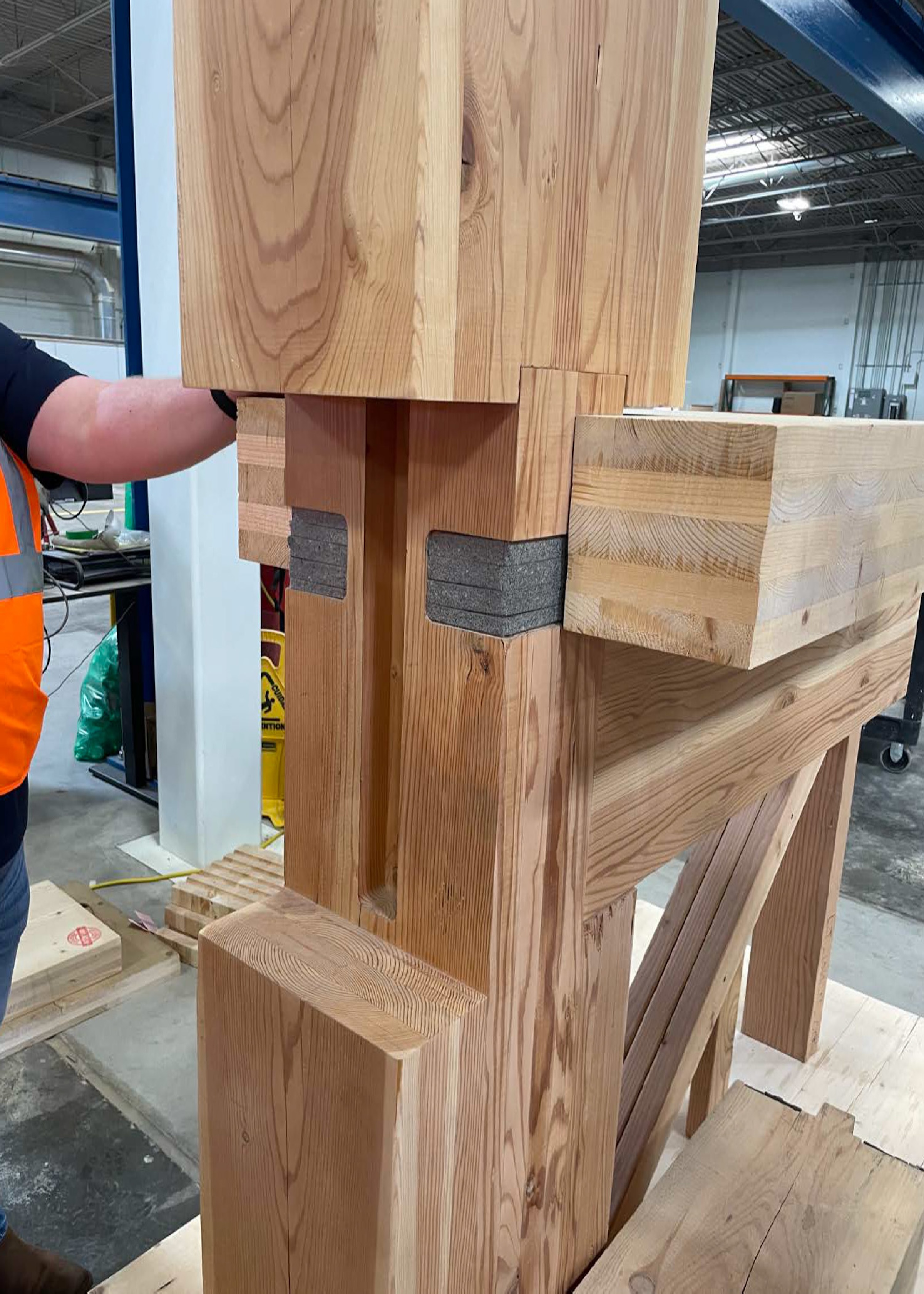
3. Teams are leveraging the two-way span capability of mass timber floor panels.
Efforts to maximize use of the inherent two-way span capability of mass timber floor panel types such as CLT and MPP (mass plywood panel) are increasing. An early example of such an approach is the Brock Commons Tallwood House at the University of British Columbia.
While best known for being the tallest mass timber building at 18 stories at the time of its completion, it also featured a unique system of highly repetitive and closely spaced CLT panels, point supported on glulam columns without beams, using their two-way spanning capability. The column spacing was relatively limited to about nine-foot widths given the production capability of CLT panel widths, resulting in very closely spaced columns (but applicable for student housing comprising many narrow dorm rooms).
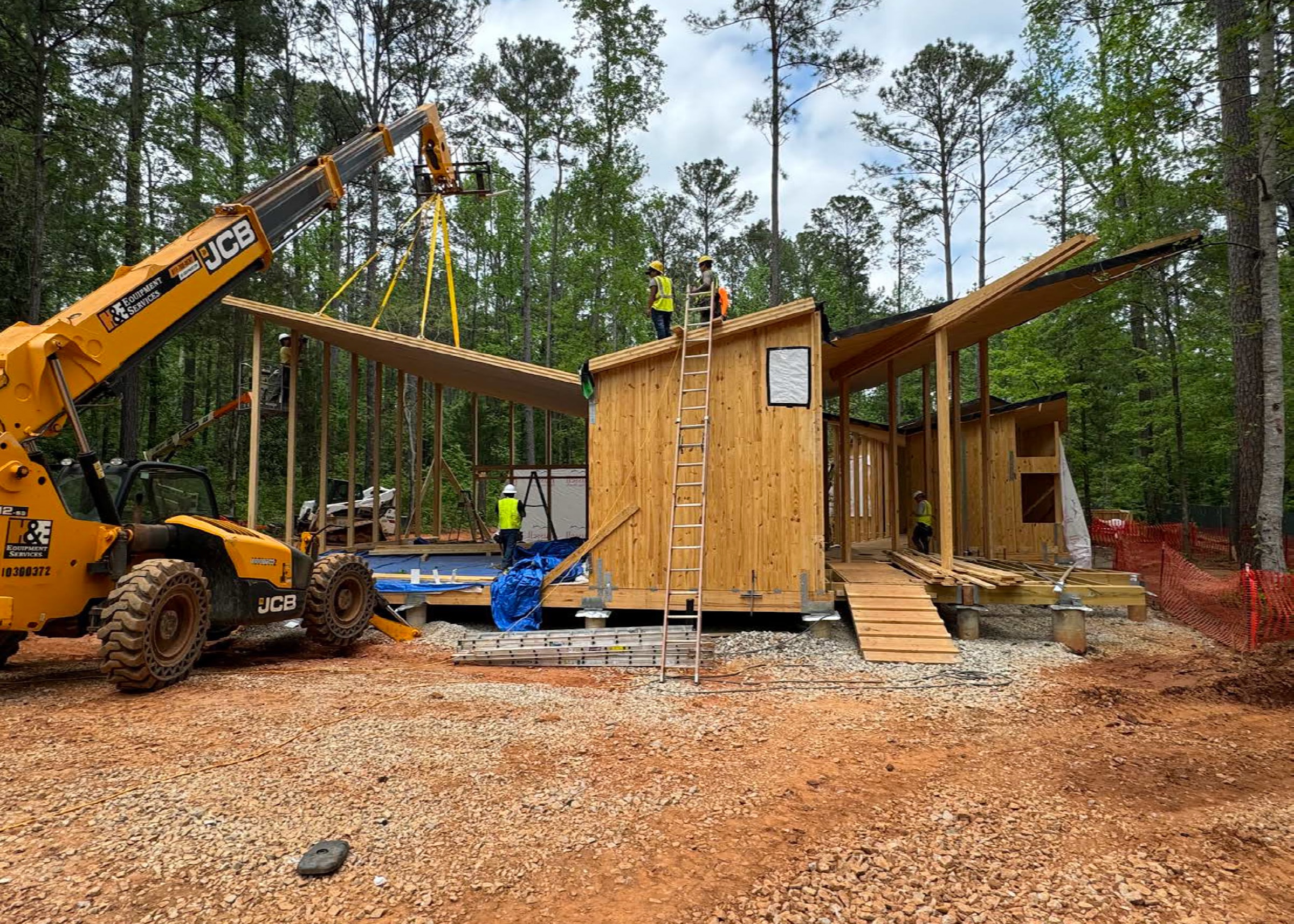
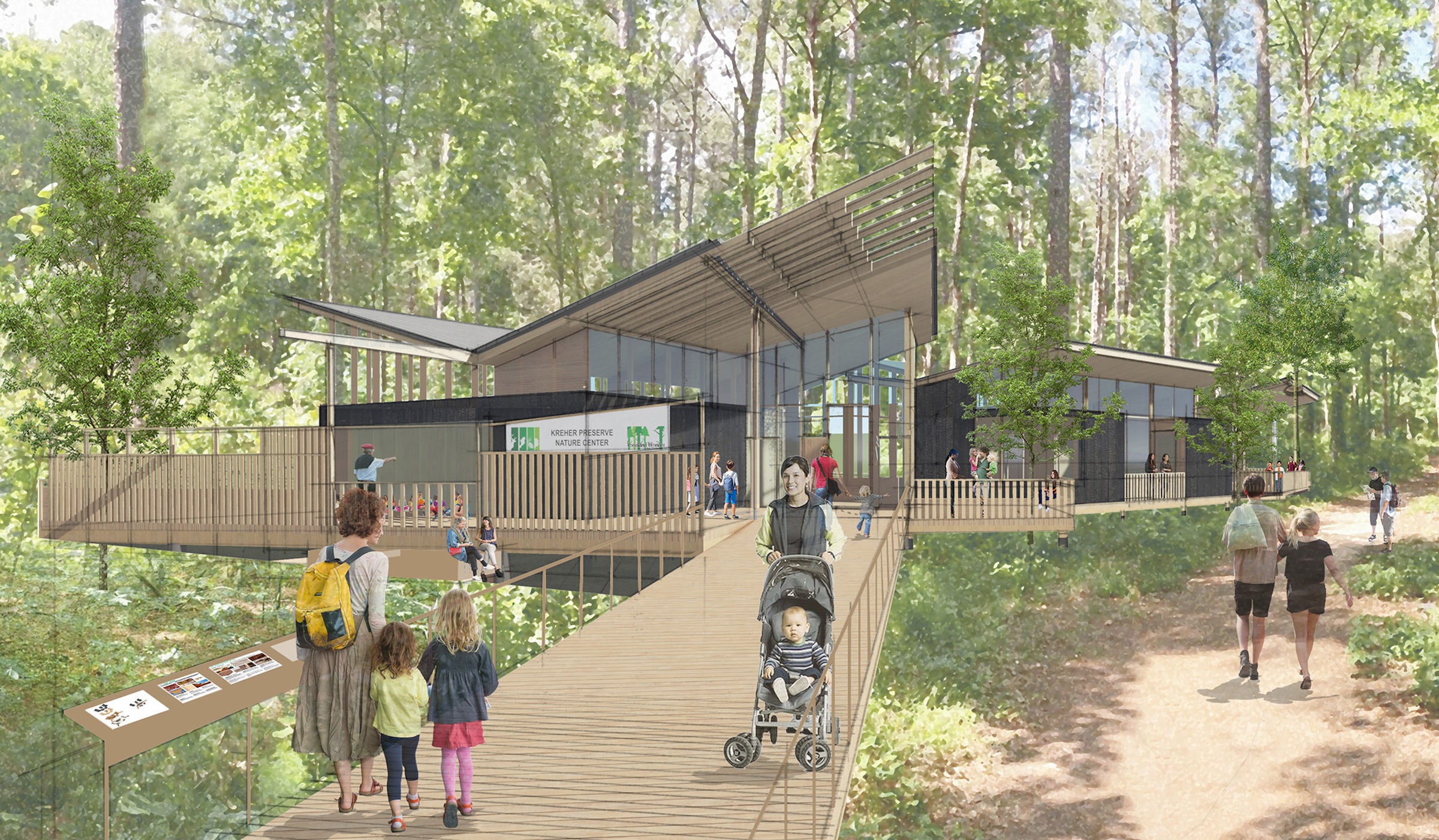
However, cutting edge research in gluing technology, especially in Europe by Timber Systems 3, is allowing for much greater spans and a truer realization of the potential of mass timber to replicate the revolutionary and versatile flat slab reinforced concrete with point-supported columns—such as those made architecturally famous by Le Corbusier in his polemical Maison Dom-Ino, giving rise to many tenets of modern architecture in the 1920s.
Intrigued by this potential, we are exploring the point-supported, two-way span capability of CLT at our KPNC Environmental Education Center project at Auburn University. There, we are cantilevering CLT panels on glulam columns without beams to maximize the effect of a flat slab mass timber roof without the visual barrier of beams below, to facilitate the connection of interior spaces to the forest preserve outside.
Collectively, these three approaches investigate the interchangeability, cost efficiency, and spatial versatility of mass timber. The objective is to expand mass timber architecture beyond the conventional use of a one-way floor span supported by beams and columns. All three methods are necessary and need to be further explored to continue to evolve and maximize the potential of mass timber.+
Related Stories
Mass Timber | Oct 10, 2023
New York City launches Mass Timber Studio to spur more wood construction
New York City Economic Development Corporation (NYCEDC) recently launched New York City Mass Timber Studio, “a technical assistance program to support active mass timber development projects in the early phases of project planning and design.”
Mass Timber | Sep 19, 2023
Five Things Construction Specialties Learned from Shaking a 10-Story Building
Construction Specialties (CS) is the only manufacturer in the market that can claim its modular stair system can withstand 100 earthquakes. Thanks to extensive practical testing conducted this spring at the University of California San Diego (UCSD) on the tallest building ever to be seismically tested, CS has identified five significant insights that will impact all future research and development in stair solutions.
Mass Timber | Sep 1, 2023
Community-driven library project brings CLT to La Conner, Wash.
The project, designed by Seattle-based architecture firm BuildingWork, was conceived with the history and culture of the local Swinomish Indian Tribal Community in mind.
Mass Timber | Jul 11, 2023
5 solutions to acoustic issues in mass timber buildings
For all its advantages, mass timber also has a less-heralded quality: its acoustic challenges. Exposed wood ceilings and floors have led to issues with excessive noise. Mass timber experts offer practical solutions to the top five acoustic issues in mass timber buildings.
Mass Timber | Jun 13, 2023
Mass timber construction featured in two-story mixed-use art gallery and wine bar in Silicon Valley
The Edes Building, a two-story art gallery and wine bar in the Silicon Valley community of Morgan Hill, will prominently feature mass timber. Cross-laminated timber (CLT) and glulam posts and beams were specified for aesthetics, biophilic properties, and a reduced carbon footprint compared to concrete and steel alternatives.
Mass Timber | Jun 2, 2023
First-of-its-kind shake test concludes mass timber’s seismic resilience
Last month, a 10-story mass timber structure underwent a seismic shake test on the largest shake table in the world.
Mass Timber | May 23, 2023
Luxury farm resort uses CLT framing and geothermal system to boost sustainability
Construction was recently completed on a 325-acre luxury farm resort in Franklin, Tenn., that is dedicated to agricultural innovation and sustainable, productive land use. With sustainability a key goal, The Inn and Spa at Southall was built with cross-laminated and heavy timber, and a geothermal variant refrigerant flow (VRF) heating and cooling system.
Mass Timber | May 3, 2023
Gensler-designed mid-rise will be Houston’s first mass timber commercial office building
A Houston project plans to achieve two firsts: the city’s first mass timber commercial office project, and the state of Texas’s first commercial office building targeting net zero energy operational carbon upon completion next year. Framework @ Block 10 is owned and managed by Hicks Ventures, a Houston-based development company.
Mass Timber | May 1, 2023
SOM designs mass timber climate solutions center on Governors Island, anchored by Stony Brook University
Governors Island in New York Harbor will be home to a new climate-solutions center called The New York Climate Exchange. Designed by Skidmore, Owings & Merrill (SOM), The Exchange will develop and deploy solutions to the global climate crisis while also acting as a regional hub for the green economy. New York’s Stony Brook University will serve as the center’s anchor institution.
Mass Timber | Mar 19, 2023
A 100% mass timber construction project is under way in North Carolina
An office building 100% made from mass timber has started construction within the Live Oak Bank campus in Wilmington, N.C. The 67,000-sf structure, a joint building venture between the GCs Swinerton and Wilmington-headquartered Monteith Construction, is scheduled for completion in early 2024.








